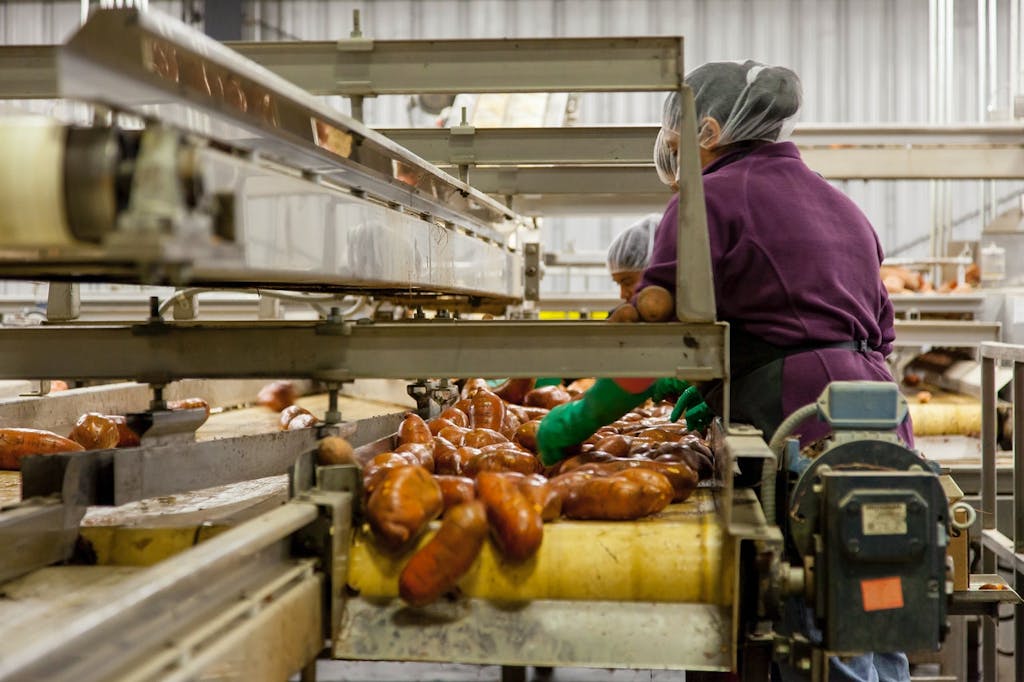The food and beverage industry constantly faces fresh challenges, pushing companies to rapidly innovate and adapt.
In this evolving landscape, it’s crucial to stay informed about the current trends steering the food and beverage sector towards its future.
This article will highlight the top five food and beverage industry trends that are making waves right now. Grasping these trends will equip companies with the insights needed to evolve and thrive in the times ahead. Although there’s a noticeable shift back to familiar patterns, the lasting effects of recent industry shifts are undeniable.
1. The Rise of Plant-Based Foods
Demand for plant-based foods is growing at an incredible rate. The options have grown far beyond replacing hamburger meat, and now there are all sorts of replacements for various meat and dairy products.
Plenty of restaurants are embracing this food and beverage industry trend already, and their continued offering of plant-based foods illustrates the success of these products. In fact, some have called the increased demand for plant-based products “more of a movement than a trend.”
Part of the popularity of plant-based foods is due to the related movement of veganism. However, vegetarians, flexitarians, pescatarians, and even many omnivores are embracing plant-based substitutes. Expect plant-based foods to dominate the next few years, if not decades. This is one of the most notable of the food and beverage industry trends that are currently in motion.

2. Healthier Foods Overall
Consumer interest in health peaked during the pandemic as people were afraid of catching the virus. Products that promise to improve immunity will likely perform well. Similarly, interest in using nutrition to strengthen the immune response will likely increase. This means that all types of healthy products will be sought out by consumers.
Healthy replacements to traditionally unhealthy foods, especially those that successfully mimic the flavor, will appreciate strong adoption among a more health-conscious society. We’ve already seen this successfully executed in many sweets, such as ice cream. This food & beverage industry trend further emphasizes the importance of plant-based foods, which are believed to be healthier alternatives.
3. Focus on Sustainability
ADM, a food technology company, has declared that for 2021, “sustainability takes center stage.” AMD bases this declaration on the fact that almost two-thirds of consumers want their food decisions to create a positive impact on the planet.
Food and beverage companies that invest in sustainability practices will reap plenty of benefits, with good publicity being one of them. Seeing a food producer take meaningful action towards sustainability production will be seen in a great light this year, and in years to come. In fact, Lux Research released a report declaring that “increasing sustainability” is a vital factor for increasing market share and brand awareness.
4. Emphasis on Food Safety
Food safety was a hot topic throughout 2020, and we don’t expect the interest in it to slow down any time soon. We’ve already seen some food producers react to the increased importance of food safety by implementing tools that help track the handling of products and ingredients at every step in the supply chain. This is useful if there is a recall or other safety issue.
Another way that food producers are embracing the need for food safety is by expediting plans for automation so that there is less reliance on tightly packed workers. Using robots when possible allows for increased social distancing when required. This food and beverage industry trend can also be applied to food truck industry trends as well, as food truck patrons want their food handled as safely as possible.

5. Total Transparency
Consumers were already wanting to know more about their food, but 2020 greatly accelerated this trend. Any technology that will allow consumers to understand the supply chain history of their products will be quickly adopted. In fact, Innova Market Insights states that transparency tops the list of consumer demands.
It can even be a low-tech solution, such as a stamp to certified cruelty-free ingredients, for example. We’ve already seen how stamps like these can quickly build consumer trust. Now, these stamps are more important than ever before as consumers want to know more about the supply chain of their products.
How Will F&B Producers Adapt to Food and Beverage Trends?
The momentum behind these food and beverage industry trends has been building for some time, with recent developments emphasizing their significance even more. As consumer preferences evolve, it’s critical for F&B companies to align with these new directions to maintain their market edge.
Technologies that enhance food safety, along with transparency practices that showcase these efforts, are set to play a pivotal role in drawing consumers in 2024 and the future.



